Have you ever wondered what’s left behind in the water after you boil vegetables? One way to find out is to test the water using Test Assured’s 4 Test Kit Set for Schools and Science Fairs. This set includes 4 test kits and is appropriate for children in grades three through twelve.
Supplies
The first thing you need to do is gather your supplies:
- Test Assured 4 Test Kit Set with TD Meter
- 3 different vegetables
- Measuring cup
- Pot
- Paper towels



Preparation
To prepare for the tests, you’ll need to make vegetable water. For this experiment, we used cabbage, an onion, and a beet. We peeled the onion and beet prior to cooking, but an interesting test might be to test water from the same vegetable with the skin and without to see if there is a difference.
NOTE: Although we used beets for this experiment, they are not recommended. The beets stained the water red which made it hard to read the results on the color charts. We suggest using vegetables that will not alter the color of the water.
Once your vegetables are chopped, it’s time to get cooking (children should be supervised when using the stove for this portion of the experiment). To make sure the conditions were the same for each experiment, we used 1 cup of water and ¼ cup of vegetables to make each sample following these instructions:
- Bring 1 cup of water to a boil
- Carefully add ¼ cup of one of your chopped vegetables
- Boil on high for 5 minutes
- Allow sample to cool for 10 minutes
- Scoop out the vegetables and pour sample into a mug or bowl
Repeat this procedure for all three of the vegetables you will be testing. Be sure to clean and dry the pot in between making your samples to avoid contamination. You may want to use tape to attach a label to each mug or bowl to identify your samples so they do not get mixed up. Don’t forget to label your vials too.

You will also need to prepare a control sample of plain water. To do this, simply follow the same instructions listed above except skip step #2.
Once you are finished, you should have four samples.
Testing
The first test you want to start with is for total dissolved solids, using the TDS meter. The meter will not fit in the test vials, so it is easier to complete this part of the experiment while your samples are still in larger containers. To perform the TDS test, simply turn on the meter and submerge the prongs in the samples. Rinse the meter in clean water between each test. Record your results in the results notebook.
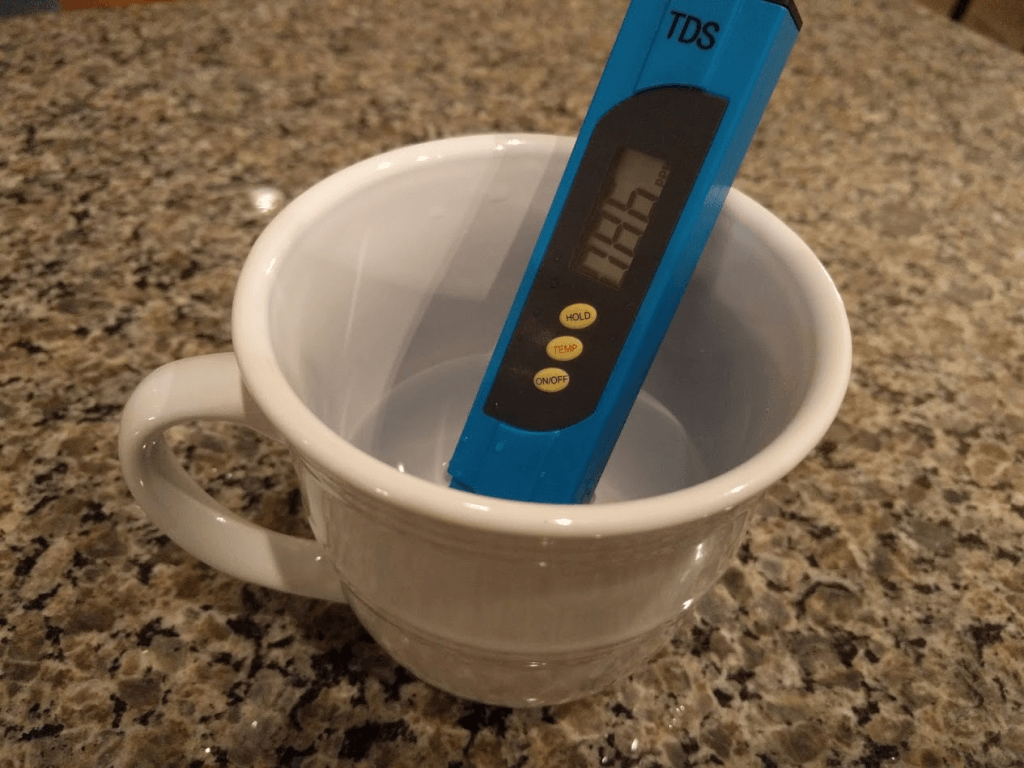
After completing the TDS test, you will need to pour your samples into the vials you labeled. Fill each vial to within a ¼” of the top. Be sure to wipe up any spills so you don’t contaminate the test strips.
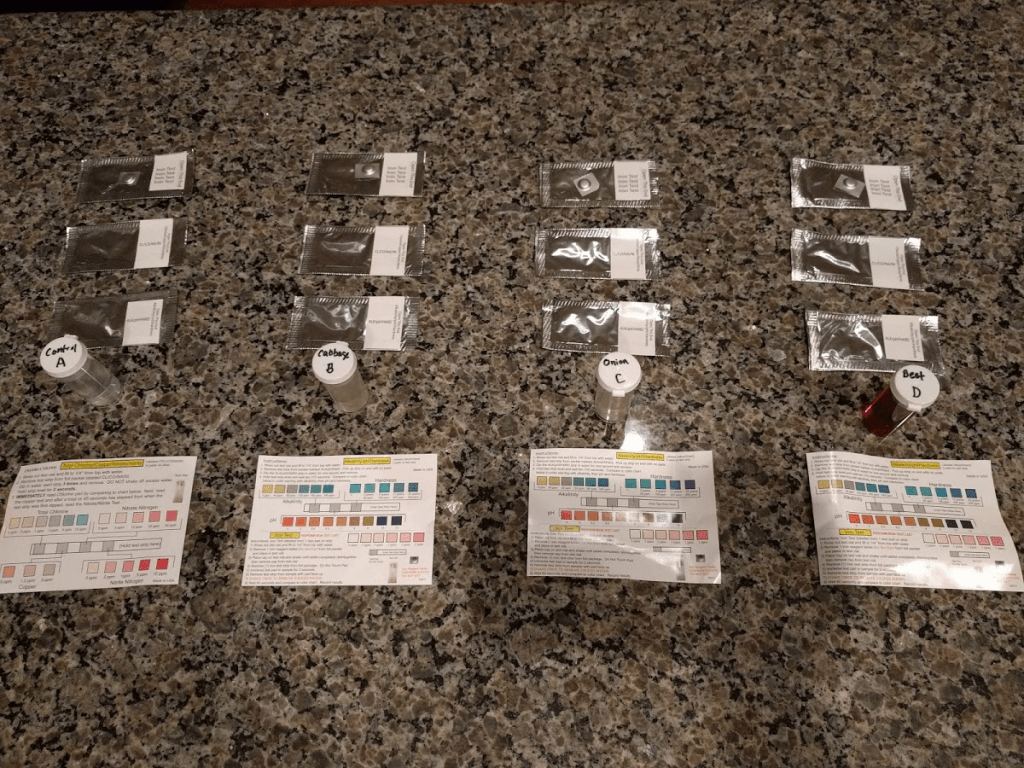
Before you get started with the tests, now is a good time to make some visual observations. These can be written in the “Notes” on the last page of the results notebook.
Now you’re ready to get started with the rest of the tests. It’s best to work with one sample at a time. Follow these instructions to complete the remaining tests.
Alkalinity/pH/Hardness Test
- Remove the test strip from the packet labeled, “ALK/pH/Hard”
- Pick up the strip on the end with no pads
- Dip the strip in the sample for one second and remove
- Hold the test strip level and wait 10 seconds
- Place the strip as shown in the picture and compare to the color chart for alkalinity, pH, and hardness
- Record your results in the results notebook
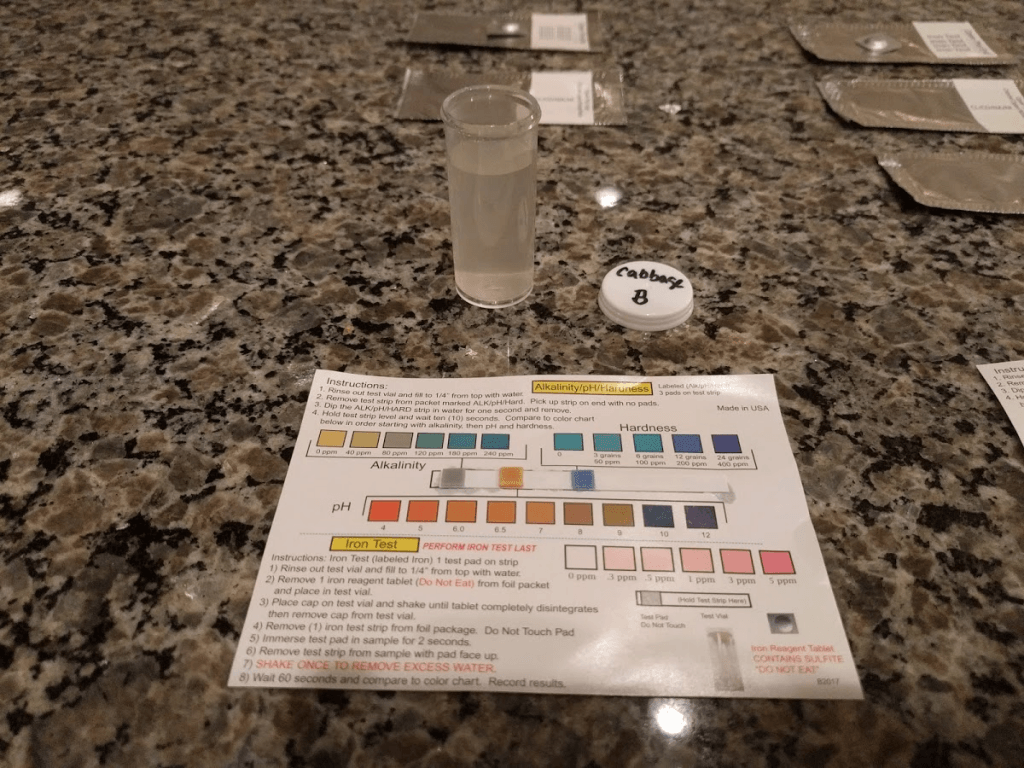
Total Chlorine/Copper/Nitrate/Nitrite Test
- Remove the test strip from the packet labeled, “CL/CO/NA/NI”
- Pick up the strip on the end with no pads
- Dip the strip in the sample three times and remove – DO NOT SHAKE OFF EXCESS WATER
- Hold the test strip level for 2 seconds
- Place the strip as shown in the picture and compare to the color chart for chlorine and copper
- Wait 45 seconds before reading the results for nitrate and nitrite
- Record your results in the results notebook
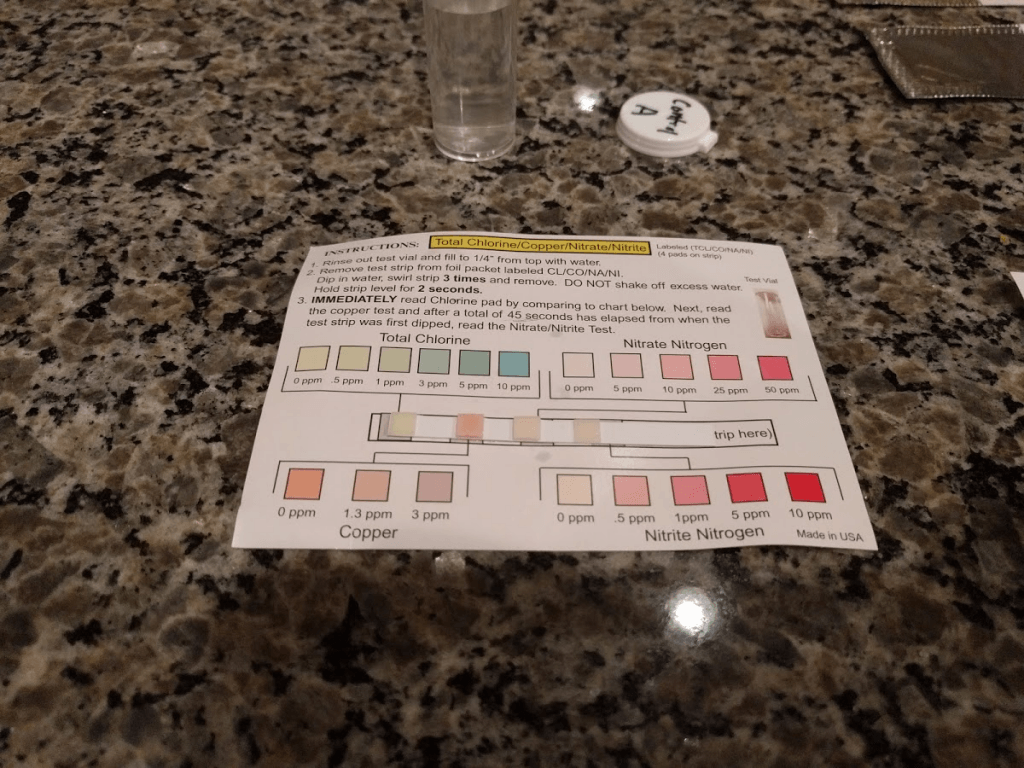
Iron Test (Complete this test last)
- Remove one iron reagent tablet from the foil packet and place in test vial (the reagent could alter the results of other tests which is why the iron test is completed last)
- Place the cap on the test vial and shake for approximately one minute, until the tablet is completely dissolved
- Remove the test strip from the packet labeled, “Iron Test”
- Dip the strip in the sample for 2 seconds
- Shake the strip once and wait 60 seconds
- Place the strip as shown in the picture and compare to the color chart for iron
- Record your results in the results notebook
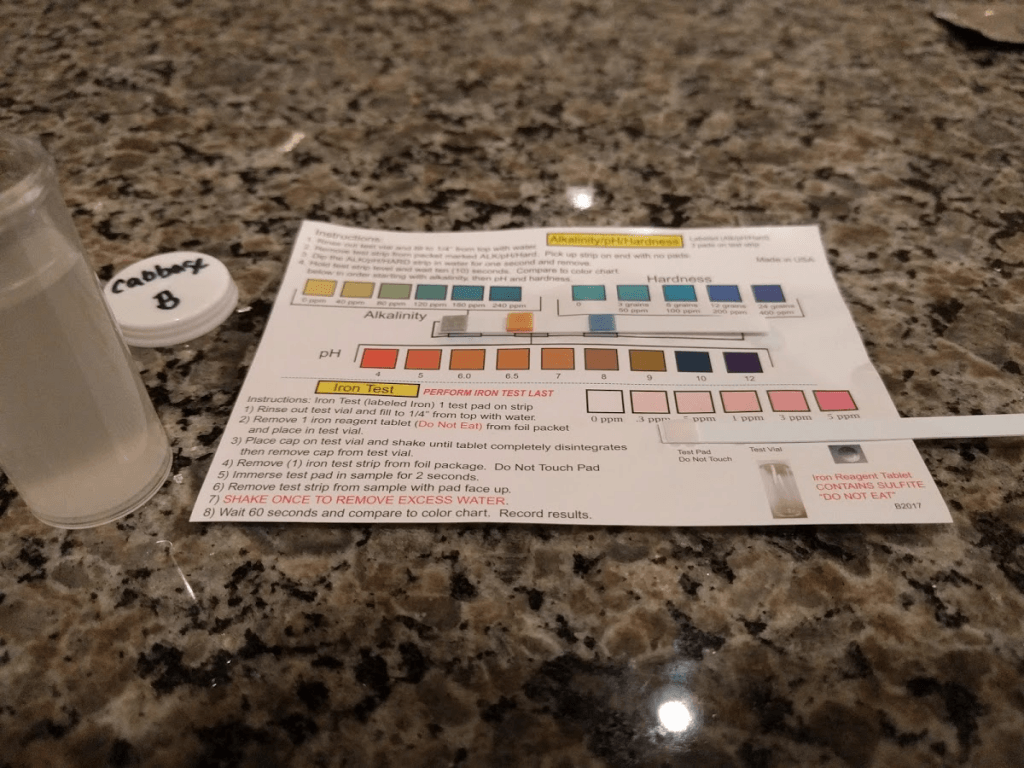
Repeat all three tests for each of your samples.
Results
Now that you have completed each of the four tests on your four samples, it’s time to look at your results. Ask yourself these questions:
- Which vegetable had the most changes when compared to the control sample (plain water)?
- Did any of the vegetables have similar results?
- Which vegetable left behind the most dissolved solids?
- What results did you find the most surprising?
Record your answers on the “Notes” page. If you are using this as a science fair project, you can use clear tape to fix the test sticks to the color charts to display your results.

